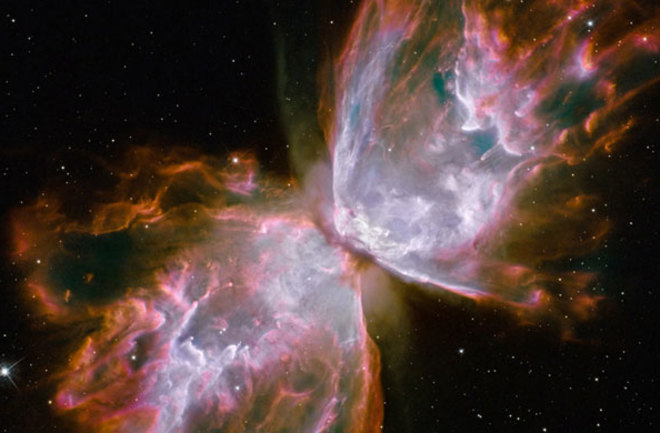Stars are born in darkness and in secret. They form deep within clouds of interstellar gas and dust so dense and opaque that no visible light can escape, and so their birth has been kept well hidden from our earthbound telescopes. Unable to pierce the black veil, astronomers have had to content themselves with constructing, from basic physical principles, their own scenario for how a star takes shape.
The chief actor in their makeshift tale has been gravity: A clump of relatively dense gas in the center of a cloud drags in on top of itself more of the cloud, making the center a bit more dense. As more and more gas falls into the center, it grows and grows until it reaches a certain critical mass and collapses under its own enormous weight.
This appealingly straightforward “infall” theory has endured for decades with hardly any variation. More recently, however, unprecedented observations from a new generation of telescopes—most significantly, the Hubble and Spitzer space telescopes—have made the tale seem increasingly simplistic. For the first time, astronomers are getting glimpses of gas clouds in the process of becoming new stars. What they are finding is far more complicated, and picturesque, than they had expected. Not only does gas fall inward, but vast quantities of gas and dust also stream outward, away from the nascent star. Narrow jets of gas apparently race from the stellar cradle at extremely high speeds and stretch several light-years out into space. Even more remarkably, stars in the throes of birth also seem to exhale giant, peanut-shaped bubbles of gas, called outflows, 100 times more massive than our sun.
These spectacular outpourings of gas are among the most extraordinary surprises of modern astronomy. “The realization that jets and outflows might occur as part of the normal process of star formation just blew everybody away,” says Jon Morse, director of the Astrophysics Division at NASA headquarters. It also presented astronomers and physicists with a puzzling question: Why do newly forming stars simultaneously take matter in and spew it out?

